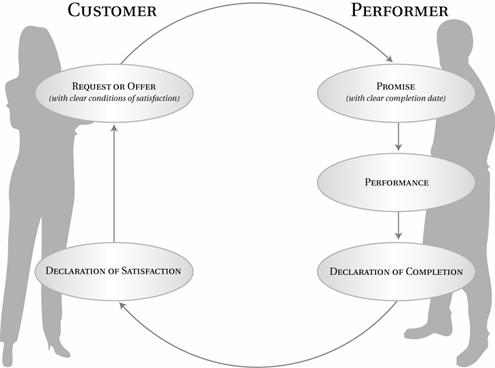Sorry seems to be the hardest word…
Almost everyone, at least from my era, remembers that old song by Sir Elton John. While you may or not like his “style” of late, you’ve got to agree, the guy does make some good tunes!
But no, this is not a blog about music, or any other topic that could emanate from a reference to Sir Elton.This is actually a post about a serious condition that is infecting the culture of many businesses today. For lack of a better term, I’ll just call it “the propensity to apologize”.
We are all taught at a very early age to say “I’m sorry” any time we harmed another person. And throughout our lives, we say it often. We say it when we offend someone we like (or sometimes even those we don’t like!). We say it when we bump into someone accidentally on the street. We say it when we interrupt or treat someone inappropriately. Initially, the words “I’m sorry” had a quite literal meaning, often used after injuring or harming someone. But over time, they began to take on broader meanings, from expressing sympathy for someone’s loss to more general feelings of regret.
Real regret or “empty words”?
But like so many words that once had quite a literal meaning, the words “I’m sorry” are now used for a wide array of purposes, and are heard repeatedly in conversations all around us. Just listen closely, and count how many times those words are spoken throughout a normal day. And while those words were once meant to “comfort” someone, they sometimes now have the opposite effect.
If you’ve ever spent time around someone in a 12 step recovery program, you know that the process of “making amends” are a big part of their journey. There is a whole body of literature on that very topic, but suffice it to say that anyone who really understands the concept of “amends”, will tell you that it goes way beyond the words “I’m sorry”. And while the spectrum of interpretation for the word “amends” can even vary widely; from the most literal definitions found in webster (“reparation or compensation for a wrong inflicted”), to a more fundamental willingness to do your part in ‘righting a wrong’, the principle remains the same. For those who take the words “I’m sorry” seriously, and who truly use them in the spirit that I believe they were intended, the words are more about ‘doing what you can to make the situation (or relationship) better’, than are about simply expressing regret or disappointment.
But today, those words seem to take on a much more shallow meaning and, more often than not, can actually have the opposite effect from “creating comfort” or “a commitment to repairing something that is broken”.
I was reminded of this when a family member told me of a recent trip he took. When sharing the details of his trip he said this to me:
“From the time I left my home until I got to my final destination, the words “I’m sorry ” were used 22 times…What the hell does that mean?”
 In not one of those interactions did he feel that the words were sincere. He felt this mostly because they were expressed in such a casual manner that the “apology” appeared to him as simply a tactic used to get the customer to ‘move on’ in the process as it was designed. In other words, to him, the expression ONLY meant that the agent (or whatever provider was saying the words) was telling him (the customer) something like this: ‘Look, I’m as inconvenienced by this as you are, but let’s face it, nothing is going to change the outcome, so lets both just move on’. Perhaps they were intended to be listened that way, or perhaps they weren’t; but they created that impression nonetheless.
In not one of those interactions did he feel that the words were sincere. He felt this mostly because they were expressed in such a casual manner that the “apology” appeared to him as simply a tactic used to get the customer to ‘move on’ in the process as it was designed. In other words, to him, the expression ONLY meant that the agent (or whatever provider was saying the words) was telling him (the customer) something like this: ‘Look, I’m as inconvenienced by this as you are, but let’s face it, nothing is going to change the outcome, so lets both just move on’. Perhaps they were intended to be listened that way, or perhaps they weren’t; but they created that impression nonetheless.
There is a whole body of knowledge out there on how linguistics can generate a wide array of emotions, perceptions, and even somatic reactions in people. I won’t get into all that here, because we all know that we can be better speakers AND better listeners, and that doing so can often prevent these kind of interactions from ruining our day. So for the purposes of this post, I’m going only to focus on the “speaking” side of the equation, and perhaps a little on the culture of the organization behind the expression of the apology.
Ok, “you’re sorry”, now what?
In a business transaction, the words “I’m sorry” are usually used after something in the transaction has gone awry- and a point at which the customer’s state of mind is, shall we say, “altered”. At this point, the customer often doesn’t give ‘one hill of beans’ about the words spoken, but instead just want the problem resolved. Sometimes that’s possible (often in more cases than not), and sometimes it isn’t. But when those words are spoken, there is often renewed “hope” (no matter how small) that they will leave the exchange in “better shape” than when it was initiated. And when we look at it like this, that changes the game a bit.
So what would have to happen for the words “I’m sorry” to truly have a meaningful impact, and an outcome that both customer and provider felt better about?
 Solving this problem is not an easy one. And it needs to involve things at the front line level in terms of the words, tone, and behavior of the person delivering them. But more importantly, it has to involve changes to the culture within which that person operates, and the way in which that culture views commitments. More specifically, the way in which commitments are made, managed, and delivered upon. After all, most if not all business transactions revolve around commitments.
Solving this problem is not an easy one. And it needs to involve things at the front line level in terms of the words, tone, and behavior of the person delivering them. But more importantly, it has to involve changes to the culture within which that person operates, and the way in which that culture views commitments. More specifically, the way in which commitments are made, managed, and delivered upon. After all, most if not all business transactions revolve around commitments.
There is a great body of knowledge written on the subject of “commitment management”, and I encourage you to spend some time exploring it. There are many practices that can help in this arena, all of which can be learned, shared, and embedded within the culture of your business. Some of them are referenced in my previous blogs, and I’ll make an attempt to consolidate those for you in the future.
Toward a “commitment based” culture…
But for our purposes here, let’s look at what those practices would look like in this specific example:
1. The tone and perspective from which the words were said, would come from a standpoint of “resolution” rather than that of a simple transaction. That is, there would be an intent to change something in the future, and yes, the front line rep would feel some accountability for making that happen, even if it’s simple escalation of the matter after the immediate transaction has concluded. While all of us want problems resolved in the ‘here and now’, we are certainly more “comforted” when we feel that there is an increased likelihood of a process fix, than we are when we are just serving as a ‘stopping point’ in a broken one.
2. The company and its leadership would have an effective process for seeking out (and acting on) feedback. At a minimum that means not punishing feedback, which unfortunately is what happens all too often (look to airline pilot protocols for some great practices here). But it also involves actually encouraging it, and acting on it when it comes to light. While feedback is often withheld out of fear of punishment (which there really is no excuse for in leadership these days), feedback is often withheld because the individual simply feels it will not be acted upon.
3. Acting on the feedback, and the results of fixes would become evident. Within short order, the employee would begin to see small changes in both the process and result, and would openly talk about what they were seeing. And ultimately, it would become visible to customers, little by little. And how would this happen, you ask?
4. It’s a little thing called measurement. In problem solving terms, we would call this the “M” in the DMAIC model (Define-MEASURE-analyze improve-control). It would involve an early action by leadership (perhaps initiated by front line management if necessary) to establish a baseline of the broken process, and a commitment to measuring and reporting future changes in performance. Only then will those changes have a chance of being noticed, and further improved upon.
It’s a big job, but start now!
Today, unfortunately, the words of apology don’t even begin to scratch the surface of connoting real change. When they are spoken, they are simply an attempt by a provider to “get absolution” (in the form of a customer proceeding to the next step of the process) without having to do anything differently.
As I said in my last post, fixing a problem should start with solid leadership, as the basis for building a true “commitment based culture”. And the steps outlined above are only a glimpse of what is necessary to get there. But we can initiate change by recognizing what success looks like, and beginning to demonstrate these practices, even of they are only in the pockets of the business in which we reside and/or lead.
Next time you hear, or say the words “I’m sorry”...think bigger. Think less about it being a regretful end to a transaction, and more about it as a renewed commitment to excellence in delivery.
Author: Bob Champagne is Managing Partner of onVector Consulting Group, a privately held international management consulting organization specializing in the design and deployment of Performance Management tools, systems, and solutions. Bob has over 25 years of Performance Management experience and has consulted with hundreds of companies across numerous industries and geographies. Bob can be contacted at bob.champagne@onvectorconsulting.com




Pingback: Promises and Commitments- A powerful combination in driving performance excellence…. « Performance Perspectives
Pingback: Customer Engagement and Efficiency- Are these conflicting priorities? « Performance Perspectives